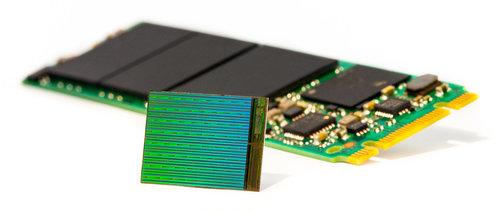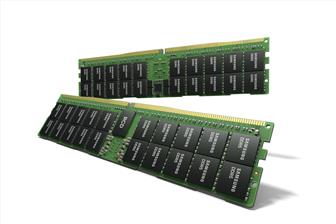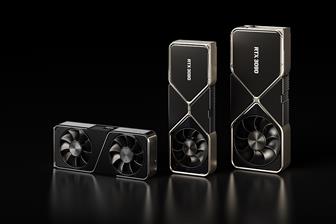
Intel and Micron have jointly announced the availability of their 3D NAND technology. This new 3D NAND technology, jointly developed by the companies, stacks layers of data storage cells vertically to create storage devices with three times higher capacity than competing NAND technologies, according to the companies.
Intel and Micron chose to use a floating gate cell. This is the first use of a floating gate cell in 3D NAND, which was a key design choice to enable greater performance and increase quality and reliability.
The new 3D NAND technology stacks flash cells vertically in 32 layers to achieve 256Gb multilevel cell (MLC) and 384Gb triple-level cell (TLC) die that fit within a standard package. These capacities can enable gum stick-sized SSDs with more than 3.5TB of storage and standard 2.5-inch SSDs with greater than 10TB. Because capacity is achieved by stacking cells vertically, the individual cell dimensions can be considerably larger, the companies indicated.
The 256Gb MLC version of 3D NAND is sampling with select partners, and the 384Gb TLC design will be sampling later in spring 2015. The fab production line has already begun initial runs, and both devices will be in full production by the fourth quarter of 2015.

Samsung HKMG DDR5
Samsung Electronics has expanded its DDR5 DRAM memory portfolio with a 512GB DDR5 module...
Photo: Company

Nvidia GeForce RTX 30 series GPUs
Nvidia's GeForce RTX 30 series GPUs are powered by the company's Ampere architecture. The...
Photo: Company

Apple HomePod mini
Apple's HomePod mini is the newest addition to the HomePod family. At just 3.3 inches tall,...
Photo: Company

Apple 13-inch MacBook Pro with Magic Keyboard
Apple has updated the 13-inch MacBook Pro with the new Magic Keyboard for an improved typing...
Photo: Company

Apple iPad Pros
Apple's new iPad Pros comes with the latest A12Z Bionic chip, an ultra-wide camera, studio-quality...
Photo: Company
- Musk says chip capacity will decide winner of AI race (Mar 21) - EE Times
- Google taps MediaTek for cheaper AI chips (Mar 17) - The Information
- European project gets $260 million for HPC chip sovereignty (Mar 6) - EE Times
- The trouble with MAGA's chipmaking dreams (Mar 3) - Economist
- Automotive chips: Gloom and doom or boom by 2030? (Feb 14) - EE Times
- Deepseek is more Wall Street than Silicon Valley (Feb 3) - Culpium, by Tim Culpan
- Tech CEOs try to reassure Wall Street after DeepSeek shock (Jan 30) - Wall Street Journal
- TSMC to make chips for cryptominer Bitdeer at new US fab (Jan 17) - Culpium, by Tim Culpan
![]() Etron's Nicky Lu on TSMC's global playbook and Taiwan's AI-memory pivot: no bottlenecks, no backpedaling
Etron's Nicky Lu on TSMC's global playbook and Taiwan's AI-memory pivot: no bottlenecks, no backpedalingGenerative AI is redrawing the tech landscape—from...
![]() Huawei
HuaweiChina-based Huawei's worldwide reach

Global server supply chain status and analysis, 2023-2025
DIGITIMES conducted a thorough investigation of major Taiwanese and Chinese EMS providers' production sites, analyzing over...

AI server BBU and Taiwan players, 2025
Taiwan-based power supply giants will benefit from rising demand for AI servers as the application's adoption of BBUs is set...

Tesla AI development in EVs and robots
Tesla leads the trend of automakers deploying humanoid robots, with reducing labor workforce as the initial goal.





